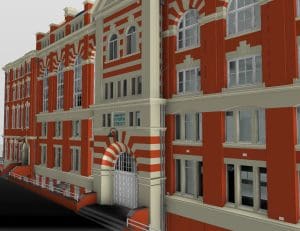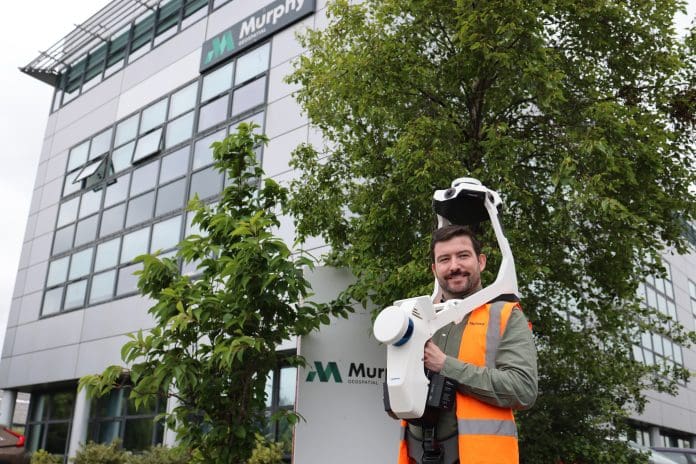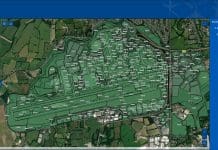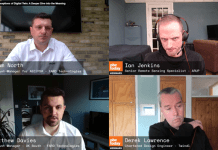Jon Butler, head of digital engineering at Murphy Geospatial, looks at the role of digital twins in the manufacturing sector and the importance of good data foundations
The manufacturing sector, like many others, is overwhelmed with data. Data is increasing in volume by the second, the nanosecond and even less than that.
Worldwide, data or information that is created, captured, copied and consumed is set to grow to more than 180 zettabytes, according to forecasts. This data holds immense potential, however.
What good is data if it’s bad data?
There is a future state which includes a manufacturing ecosystem where the Internet of Things (IoT) and a network of sensors provide real-time insights into facilities, and an intuitive digital twin provides the connection between physical and digital realms.
An intuitive digital twin comes with promises of better efficiency, waste reduction, error elimination and the protracted longevity of assets beyond their current use.
This includes retrofitting older structures for energy efficiency, demonstrating its value in sustainable practices. The UK Green Building Council predicts that 80% of buildings occupied in 2050 already exist today. Digital twins are a ready companion for facilities managers looking to increase the sustainability of these assets.
However, this future state is only possible if the data which feeds the digital twin is subject to standardisation and proper governance. Standardisation is critical to ensure that data speaks to each other across numerate, complex systems.
In manufacturing, the implications of bad data cannot be overstated. Bad data, characterised by inaccuracies, incompleteness, inaccessibility, inconsistency or untimeliness, poses a significant danger to the entire production process. Similarly, faulty information hampers the ability to gain a comprehensive understanding of a manufacturing facility, hindering strategic planning and timely responses to challenges.
Good data that is governed by this standardisation, will be fundamental and serve as a project’s foundation. This precision enables informed decision-making, reduces inaccuracies and ensures the completeness and consistency of data throughout the asset lifecycle. Good data is the gateway to the full potential and promises of an intuitive digital twin of a truly smart factory.
Breaking down barriers: Industry 4.0 and 5.0
The journey towards digital transformation faces formidable barriers. External challenges, ranging from the cost of materials to skills shortages, present hurdles for industries eager to digitalise. However, alongside this must be the recognition of the long-term benefits of accurate data which will lead to digitalisation.

Future-focused manufacturers are looking at how to build these layers of data, while maintaining accuracy. Digital twinning might not yet be in their grasp, but it starts with an accurate digital record of an asset via forensic data capture and the process of Scan-to-BIM. While the immediate benefits of having accurate data within the architecture of a digital twin might not be apparent in small-scale projects, the true value unfolds over time.
In the near future, digital twins will prove instrumental in the refitting, retrofitting and management of facilities. The many different applications of a system like this shows how versatile this technology can be. BIM serves as a comprehensive baseline and standardised process for retrofitting and refurbishment projects, promoting accuracy, efficiency and sustainability of, and profitability of, assets.
The adoption of digital twins increases stakeholder engagement
The growing popularity of digital twins also supports another crucial element of managing assets: increased stakeholder engagement and collaboration. Visual interfaces become the bridge between technical engineers and non-technical stakeholders, facilitating a shared understanding of complex data. This trend is particularly pronounced in manufacturing, where collaboration among a diverse range of stakeholders is vital for success and longevity of the asset.
The visual appeal and user-friendly nature of digital twins make them more than just tools; they become platforms for meaningful engagement, fostering collaboration and innovation.
Laying the foundations with geospatial data
We’re working with many clients within the manufacturing industry and supporting them to capture, collate, verify and govern different levels of this layered information. Whether it’s capturing a single digital record, which then becomes an intangible asset with its own value, a full scan of a facility, fitting of sensors for continual monitoring or integrating with other providers and their own (good) data to give the most complete picture of an asset.
The potential of digital twins is available to all manufacturers, you just need a discerning eye for bad data and to start by choosing the buildable layers at which you can currently engage.
Jon Butler

Head of digital engineering
Murphy Geospatial
Tel: +44 (0)203 598 3775

















